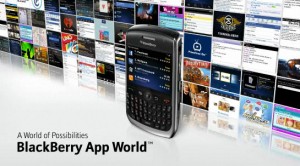
BlackBerry recently announced that its BlackBerry 10 App World had reached the significant 100,000 app milestone. The large number of apps that developers have been able to submit to the platform in such a short period of time deserves applause, but BlackBerry hasn’t been very clear as to what kind of apps these are exactly. Many critics have commented that apps in BB10 feel very similar to their counterparts in the Google Play store, which has led to a discontinuity between the feel of the operating system and the design of these applications. Two years ago, Blackberry (then RIM) had announced that its Playbook tablet would be able to run Android apps apart from Adobe Air, HTML5, and native C/C++ QNX apps. The Playbook runs the same QNX operating system that the BlackBerry 10 OS is based on.
This situation is comparable to the IBM-Microsoft issue that happened in 1992. IBM created a ”Better DOS than DOS and a better Windows than Windows“ with OS/2. The 32-bit OS was better than DOS and Windows 3.0 in ways that it could take advantage of more memory, multitask, protect native OS/2 applications separately and also run DOS and Windows 3.0 applications in distinct regions of the memory. On the whole, the OS was able to virtualize Windows. Compatibility issues kept cropping up and IBM had to face many challenges to keep up with the changes in Microsoft Windows.
Coming back to the present, Blackberry’s QNX OS is a mature and sophisticated operating system. Architecturally, the platform can be considered better than both iOS and Android. In spite of going for virtualization, Blackberry chose a native Dalvik VM port/binary emulation layer to implement Android compatibility. As a result, it can’t run NDK apps and those applications have to be ported using the native C/C++QNX SDK instead. Blackberry will not have much to worry about until Google makes changes in to the Dalvik VM as part of the Android Open Source Project. If that does happen, there will be serious compatibility issues for all the apps developed for the future versions of the API.
Blackberry 10 is an assortment of multi-vendor API’s – Android 2.3 Dalvik APIs, QNX C++ native, Adobe Air/Flash, Java and WebWorks platform SDK. However, the question that arises here is whether users will actually choose the Z10 over the Galaxy S IV and other flagships as BB10 will just be another OS that offers Android apps. Also, will developers bother make enough native QNX apps to really showcase the platform?